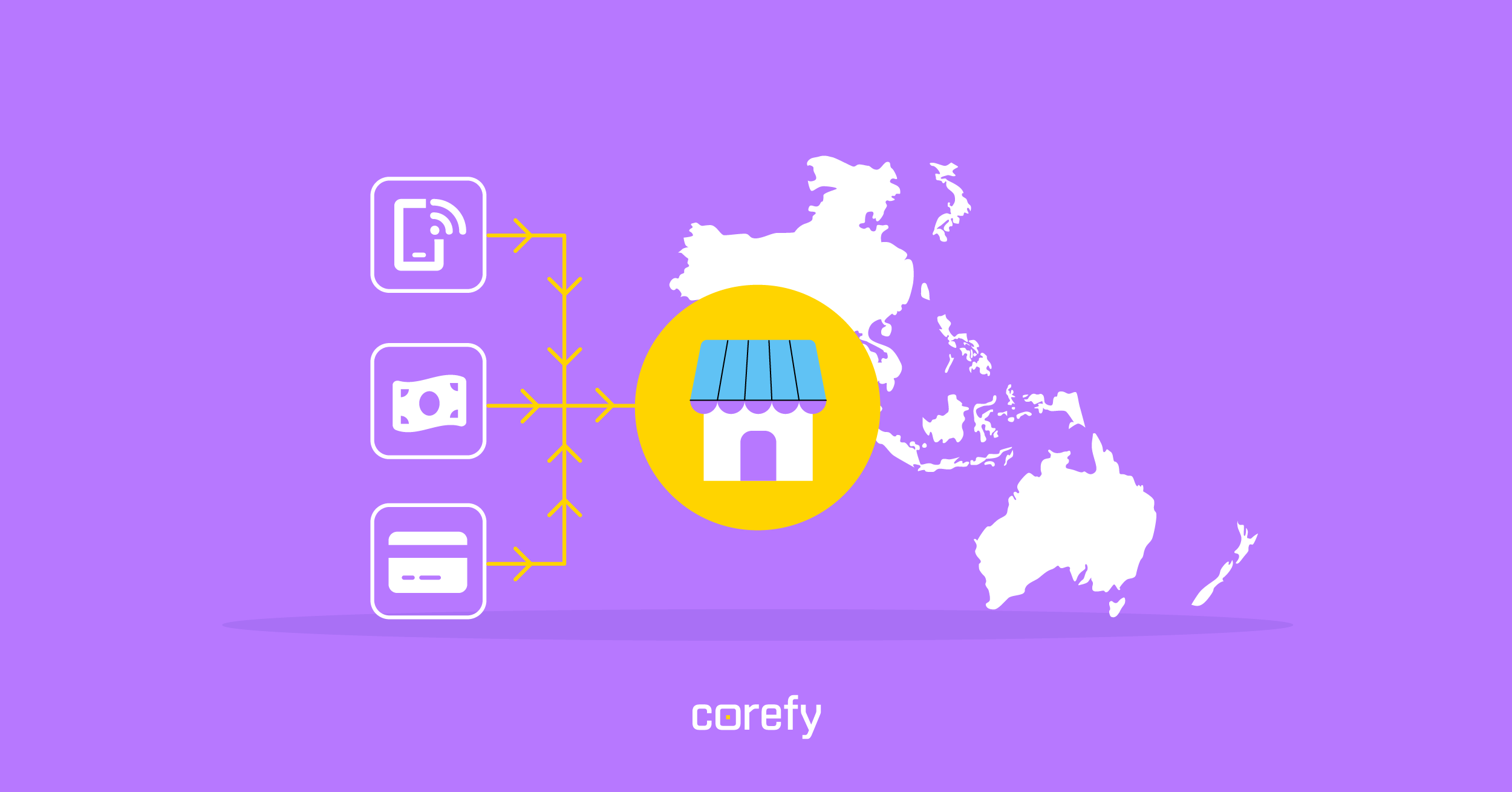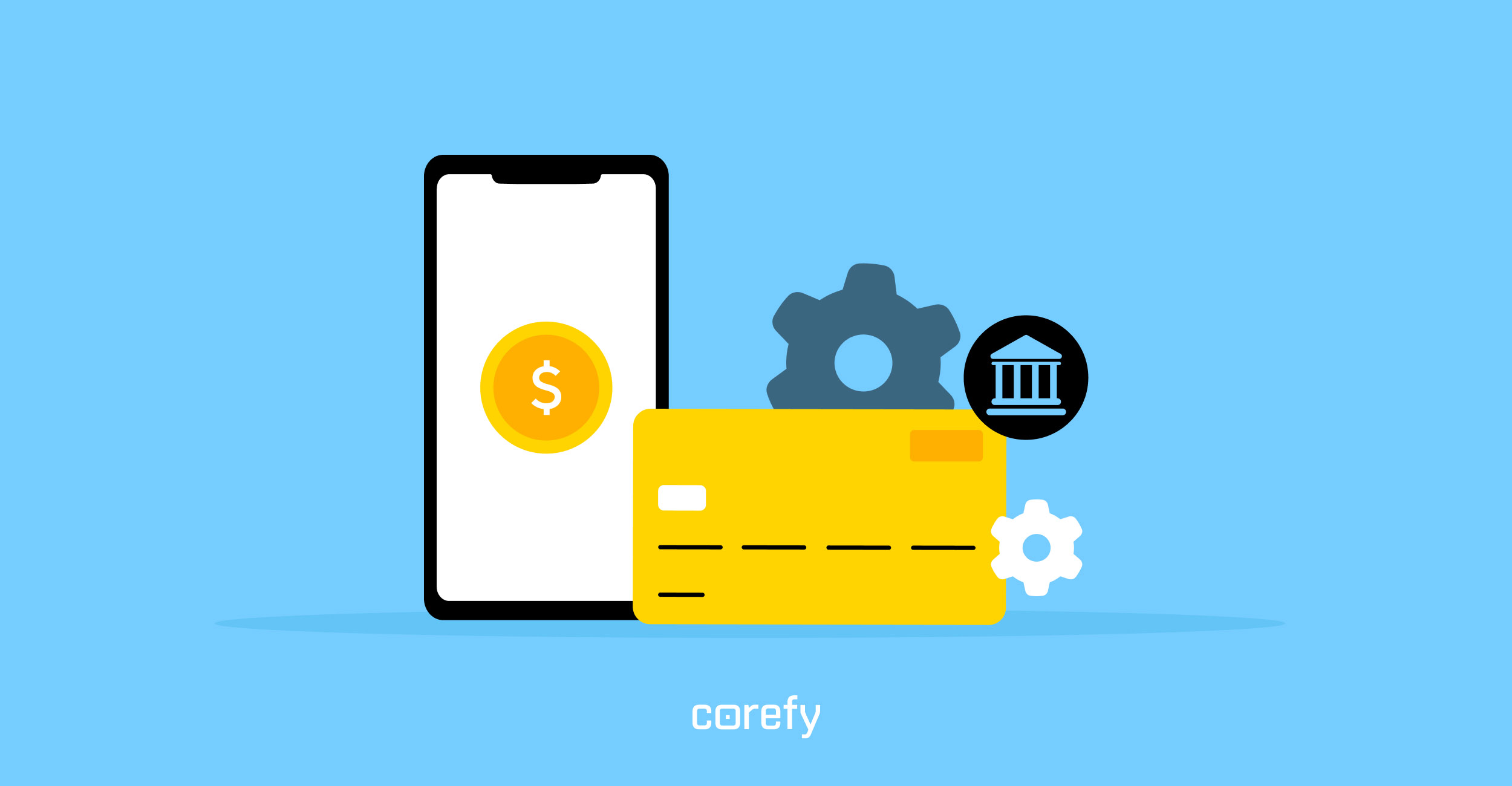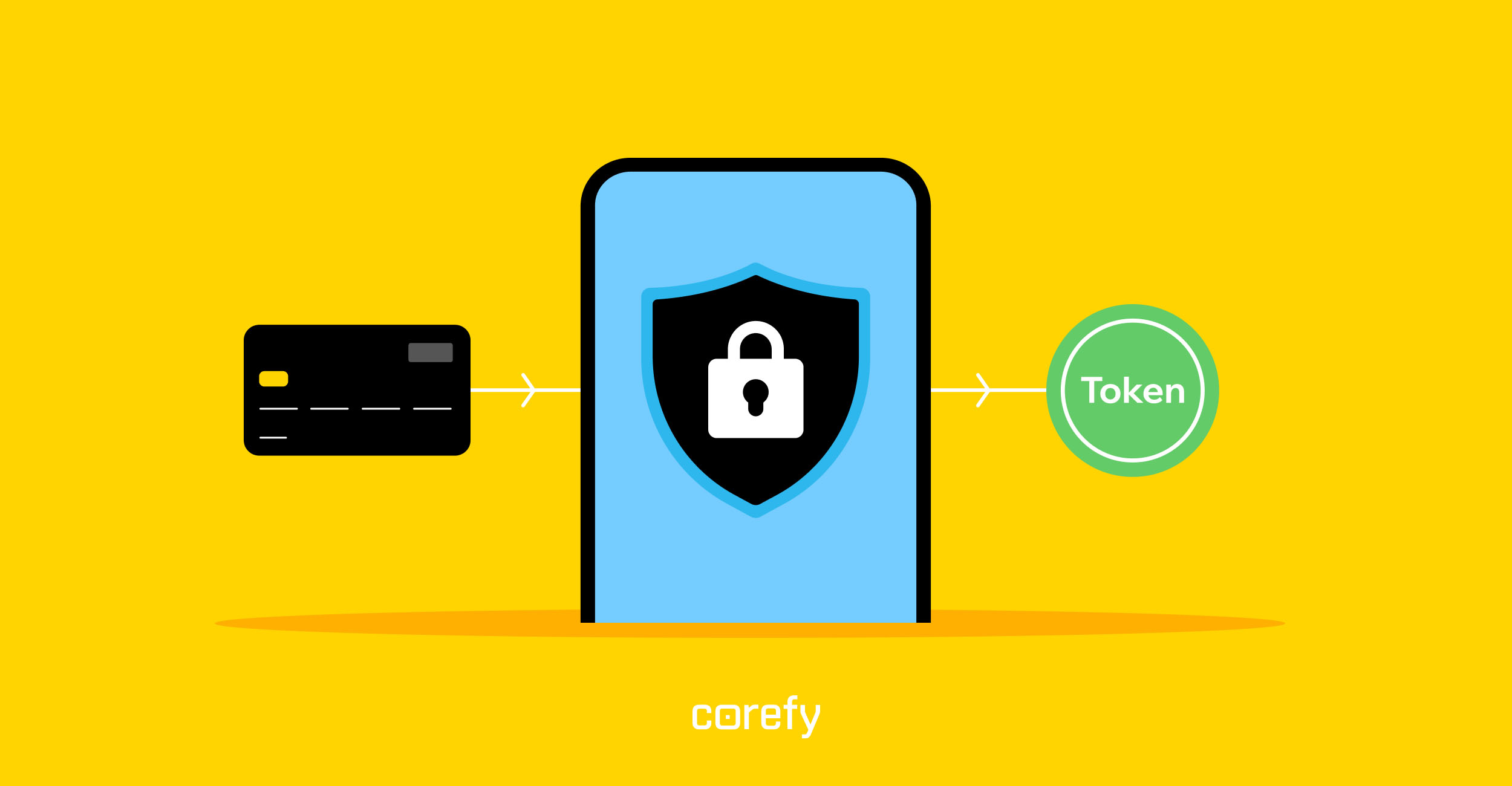The Asia-Pacific (APAC) region is a powerhouse in the global economy. It boasts diverse cultures, rapid technological advancements, and a burgeoning middle class. Amidst this landscape, understanding the intricacies of the APAC market and its payment trends is crucial for businesses aiming to expand into this dynamic environment.
This article delves into the APAC market overview, highlights the region's specificity for businesses, explores the peculiarities across APAC countries, and identifies the most preferred payment methods prevalent in the area.
APAC market overview
From East Asia to Southeast Asia and Oceania, the APAC region encompasses many economies ranging from developed nations like Japan and Singapore to emerging markets like India and Indonesia. With a collective population exceeding 4.3 billion, APAC presents a vast consumer base with opportunities for businesses across various sectors.
According to the International Monetary Fund's research, the region experienced a 4.6% GDP growth in 2023. Rapid urbanisation, increasing disposable incomes, and a burgeoning middle class have been mainly fueling it. Moreover, digitalisation has transformed consumer behaviour, leading to a surge in online shopping and digital payments. E-commerce giants like Alibaba (China) and Rakuten (Japan) have capitalised on this trend, reshaping the retail landscape and driving innovation in payment solutions. The GDP growth is predicted to slow down to 4.2$ in 2024.
Market specificity
Navigating the APAC market poses unique challenges and opportunities for businesses. Cultural diversity, regulatory complexities, and varying levels of technological adoption require a nuanced approach to market entry and expansion. Furthermore, this market is characterised by intense competition, both from domestic players and multinational corporations. To stand out, businesses need to tailor their products and services to cater to the diverse needs and preferences of APAC consumers while staying agile to adapt to evolving market dynamics.
This region is often considered a tough nut to crack due to several peculiarities. The two central are the fragmented payment landscape and the disjointed behaviour of the purchasers. Here's a short list of prominent APAC market specificities.
- Consumer behaviour. The APAC region comprises 48 countries, and each perceives goods and advertising differently. For instance, in Malaysia, people trust influencers' opinions, but Filipinos prefer to see customers' reviews.
- Payment landscape. Although it would be convenient, the Asian market doesn't have a single payment system that purchasers can use across several countries. Moreover, bank cards are not the most popular payment method in many countries. For example, virtual accounts are the most common in Indonesia, and purchasers from Thailand prefer cash transfers through large networks like Big C and Tesco.
- Restrictions. The laws and restrictions on the legal status of gambling in the Asia-Pacific countries vary greatly. Thus, gambling is completely banned in China, but the situation is reversed in Australia and the Philippines. Businesses must compete with local casinos and bookmakers to make a mark here.
- Trending areas. E-sports are quite popular in the APAC region. However, the demand for mobile games has been actively growing in China and Southeast Asian countries. As an example, the highest-grossing mobile game in 2023 was the Chinese Honor of Kings. According to the Global Data report, distance learning has also demonstrated its potential during isolation periods and was valued at $270.5 billion in 2023. The digital technologies market is also trending: it is predicted to grow to $133 billion by 2024.
Preferred payment methods in the APAC region
The APAC region showcases a diverse array of payment providers, reflecting the cultural, technological, and regulatory nuances of each market:
- Mobile payments. With the proliferation of smartphones, mobile payments are gaining popularity across APAC, driven by apps like Alipay, WeChat Pay, Paytm, and GrabPay.
- Digital wallets. Digital wallet adoption is widespread. Players like Apple Pay, Google Pay, and local counterparts such as Paytm in India and Line Pay in Japan are gaining prominence.
- Bank transfers. Direct bank transfers remain a popular payment method in many countries, offering a secure and familiar way to conduct transactions.
- Credit and debit cards. While credit card usage varies across the region, it remains a prevalent payment method in urban centres and among affluent consumers.
APAC countries & peculiarities
According to the World Bank's economy ranking, the APAC market is quite ambiguous. This ranking considers the regulatory environment's loyalty to starting and operating a local company. Certain countries favour starting new businesses or expanding the existing ones, and others presume certain challenges.
Each APAC country exhibits distinct characteristics and consumer behaviours, making it essential for businesses to tailor their strategies accordingly:
Japan
91.8% of the Japanese population is urban. Consumers often tend to choose environmentally conscious brands but are not always ready to pay more for them. Despite its technological advancements, Japan remains a predominantly cash-based society, albeit slowly transitioning towards digital payments. QR code-based systems like PayPay are gaining traction, but credit cards and cash remain prevalent.
- Buyers' behaviour model. Quality consumption prevails over quantity here. Japanese consumers mainly watch videos and follow influencers' opinions on products before buying. Also, nearly 3/4 of consumers inquire with social networks before purchasing, especially when it comes to cosmetics and fashion.
- Shopping trends. Japanese consumers are open to international. Products imported from countries perceived as special, such as Swiss watches or French wine, attract them.
- Preferred payment options. 53% of Japanese consumers prefer payment cards, 22% — e-wallets, and 16% go for bank transfers. The rest still pay with cash or prefer other payment methods.
China
China, the world's largest e-commerce market, boasts a thriving digital ecosystem dominated by platforms like Alibaba's Taobao and JD.com. Mobile payments, led by WeChat Pay and Alipay, are ubiquitous, and cash is becoming increasingly obsolete.
- Buyers' behaviour model. Chinese consumers love bright and rich user interfaces. Many buttons and red colour on a landing page are welcome for localisation in the Chinese market.
- Shopping trends. China is the Asian cradle of esports: according to Statista, the country accounted for $445.18 million in 2023, ranking second globally. Food delivery services are also popular.
- Preferred payment options. These are mostly AliPay and WeChatPay.
Australia
The region ranks twelfth as the largest e-commerce market, with a predicted revenue of $53,066.5 million by 2024. 80% of the country's residents make online purchases several times weekly and actively use instalment purchases.
- Buyers' behaviour model. Australians treat online shopping with deliberate care: any decision they make is usually based on price and quality analysis. As long as domestic production does not always cover their needs, Australians got used to buying foreign products.
- Shopping trends. The demand for natural and organic products, especially fruits & vegetables, is growing annually in Australia. The country also has a large market for second-hand goods: the desire for savings stimulates the expansion of sharing services.
- Preferred payment options. The most widespread payment option among Australians is the POLi bank transfer system.
Indonesia
In Indonesia, most people outside the major cities do not have access to banking services because they do not even have an ID. However, the digitalisation of the economy and e-wallets allow people to deposit money on a virtual wallet or card. Moreover, 50% of the population is under 30 years old and actively uses smartphones, so the prospects are clear.
- Buyers' behaviour model. Online trading outside Jakarta is still underdeveloped due to logistic issues. Indonesians also believe that national producers better understand their needs and take better care of customers, so they prefer local products and brands to foreign ones. Nevertheless, foreign companies have a chance: it is critical to fully localise the site and payment script to win the locals' love.
- Shopping trends. Indonesians often use ride-hailing services (booking rides through a web browser or app) and food delivery services.
- Preferred payment options. Many payment transactions go through Doku virtual accounts. Both ATM cards and cash payments are popular.
Malaysia
In Malaysia, more than 80% of the population uses the Internet. Residents of the country spend more on online shopping than in the Philippines and Thailand — over $6 billion annually.
- Buyers' behaviour model. Social media influencers are Malaysians' main authority and incentive to buy. With this in mind, companies invest heavily in SMM promotion of their products.
- Shopping trends. Malaysians are willing to spend the most money on food delivery and entertainment, such as buying movies or amusement park tickets.
- Preferred payment options. Malaysians mostly use mobile payments — about 46% of payments are from local e-wallets, and only 29% are bank cards. GrabPay, Touch' n Go, Mcash, and Boost are popular options are popular options are popular options.
Vietnam
This region's economy is mostly based on agriculture. However, Vietnam has been experiencing growth due to exporting IT hardware, such as broadcasting equipment and mobile devices. The country's economy is also actively growing due to the manufacturers, who moved their production from China to Vietnam due to the pandemic and US sanctions. The country's GDP is growing and is expected to reach $469.67 billion
- Buyers' behaviour model. Vietnamese often consider recommendations from friends and relatives, TV ads, and store promotions. But they are also actively adapting to digital channels and social networks.
- Shopping trends. The Vietnamese esports market is considered to be the largest in Asia after China. SaaS services are also popular.
- Preferred payment options. Vietnamese prefer ATM cards, QR banking, MoMo wallets, ViettelPay, and NganLuong.
Philippines
The majority of the population uses online shopping services. On average, its residents spend about $3.7 billion on online purchases during a year. The local government actively welcomes foreign investments in the development of science and technology.
- Buyers' behaviour model. The residents love with their eyes: a video review of a product or service is more likely to induce them to buy it than banner ads or aggressive social media targeting.
- Shopping trends. Video gaming is widespread throughout the country. At the same time, Filipinos are willing to pay more for products and services from socially responsible companies that care about public health and the environment.
- Preferred payment options. Cash is the predominant payment method here, but people also use virtual initiatives such as GCash, Mobiamo, PayMaya, and Grabpay.
New Zealand
The New Zealand market is expected to grow: according to Statista Digital Market Outlook, the CAGR is predicted to be 7% by 2024. Interesting fact — New Zealand has the lowest level of chargebacks in Asia-Pacific.
- Buyers' behaviour model. More than half of New Zealanders seek information about interesting products and services online. Rural residents tend to buy online more than urban dwellers, so companies may be interested in targeting by location. At the same time, 69% of New Zealanders receive purchases at pick-up points in person, and only 19% use courier delivery.
- Shopping trends. The coronavirus epidemic has doubled online shopping in New Zealand, with the most popular categories now being apparel and beauty products. Also, local analysts predict an increase in demand for home appliances.
- Preferred payment options. POLi bank transfer system is widely used.
Thailand
In Thailand, broadband and 5G networks cover even rural areas, so the volume of online purchases is impressive — about $4,14 billion annually.
- Buyers' behaviour model. Thai residents tend to buy through social networks. Contacting customer support and receiving prompt responses is critical for them.
- Shopping trends. Thai residents often order food and goods for their pets on the Internet.
- Preferred payment options. The most used options in Thailand are bank cards, cash transfers through Big C and Tesco supermarkets, online wallets TrueMoney, Line Pay, mPay, and state QR-banking ThaiQR.
India
The country has a rapidly growing market fueled by a burgeoning internet user base.
- Buyers' behaviour model. Indian buyers' behaviour is characterised by a blend of tradition and modernity, encompassing factors such as family influence, value-consciousness, and increasing digital engagement.
- Shopping trends. The country presents immense opportunities for e-commerce and digital payments.
- Preferred payment options. Mobile wallets like Paytm and digital payment systems such as UPI (Unified Payments Interface) have gained widespread adoption.
South Korea
- Buyers' behaviour model. The locals embrace innovative shopping experiences, including mobile payments, social commerce, and meticulous research before purchase.
- Shopping trends. Tech-savvy consumers, innovative e-commerce solutions, and a growing demand for convenience drive a strong preference for online platforms.
- Preferred payment options. Renowned for its tech-savvy population, South Korea embraces various payment methods, including mobile payments, credit cards, and digital wallets like Samsung Pay and KakaoPay.
Unless the regional trends and rules are followed, it will be difficult for your business to take root in the APAC region.
How to enter several countries in the Asian market at once
While expanding to APAC, it's essential to localise your business. It's great to find a local expert, adapt your product or service to these regions, and write a sales scenario for each. Offering local acquiring may require additional costs. In this case, you'll have to register a legal entity and create a company's local branch. If the business offers its clients only alternative payment methods, there is no need to register. Also, such companies will avoid chargebacks since they are not provided in case of payments via alternative payment methods.
The Asian-Pacific market is promising, but businesses should enter it with caution since the region is characterised by heterogeneity in legislation, payment infrastructure, and financial behaviour. At Corefy, we offer expanding businesses a comprehensive platform to seamlessly enter and thrive in new markets. Our solution facilitates the swift integration of 400+ payment methods with just a few clicks, streamlining operations by centralising management across multiple providers. By partnering with Corefy, businesses gain access to a dedicated manager well-versed in the global payment landscape and in navigating relationships with providers and acquirers. Contact us to get more information and assistance from our experts.






.jpg)

.jpg)



.jpg)
